The BlowerBaby 2 is the 2nd generation of Nitecore’s portable electronic cleaning device. Marketed strongly at photographers that want to keep their cameras, lenses, and sensors clean, I agreed to test the BB2 when one was offered to me through their distributors. No money changed hands, and neither the distributor nor Nitecore themselves was allowed to read the review before it was published.
Table of Contents
BlowerBaby 2 Specifications
- Input: 5V⎓2A
- Rated Power: 33.6W
- Battery Capacity: 7.2Wh
- Cleaning Times: Approx. 800 Times (MAX)
- Rotational Speed: 30,000 RPM
- Wind Speed: 80 km/h (49.7 mph) (MAX)
- Dimensions: 141mm x 62mm x 32mm (5.55″ x 2.44″ x 1.26″)
- Weight: 210g (7.4 oz)
Optional Lens Brush
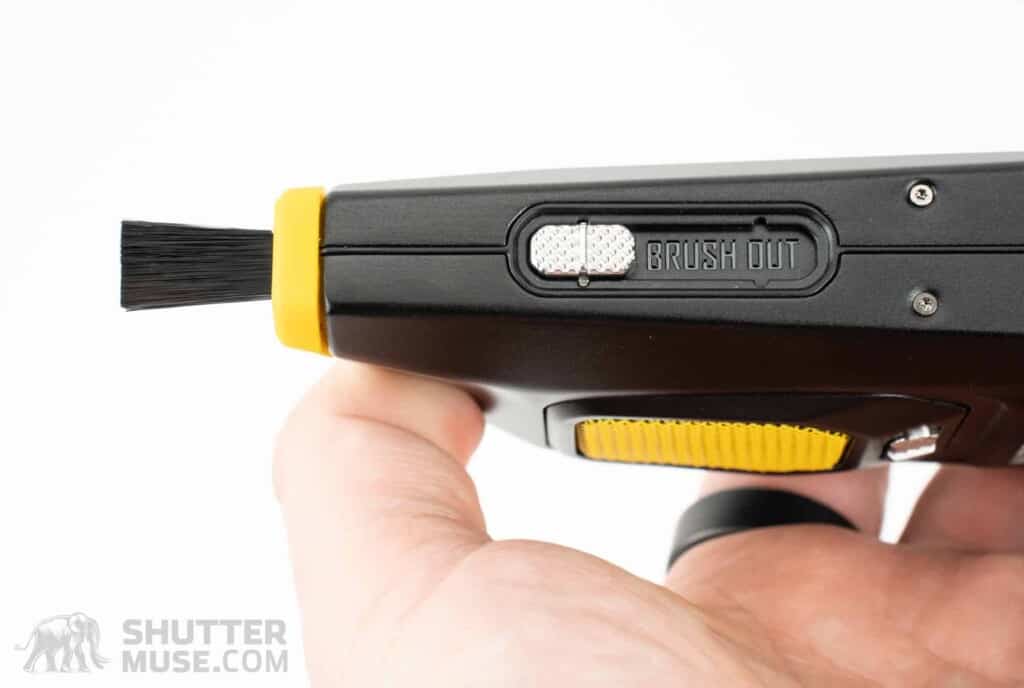
The BB2 comes with a reasonably coarse retractable brush designed to be used for cleaning camera bodies. It helps dislodge dirt from nooks and crannies but shouldn’t be used on lenses or camera sensors. The brush attaches to the BB2 using magnets, and an optional, softer lens brush can be installed. Looking at the product listings on Amazon, adding the optional lens brush to the package bumps the price by about $3-4.
BB2 Air Filter
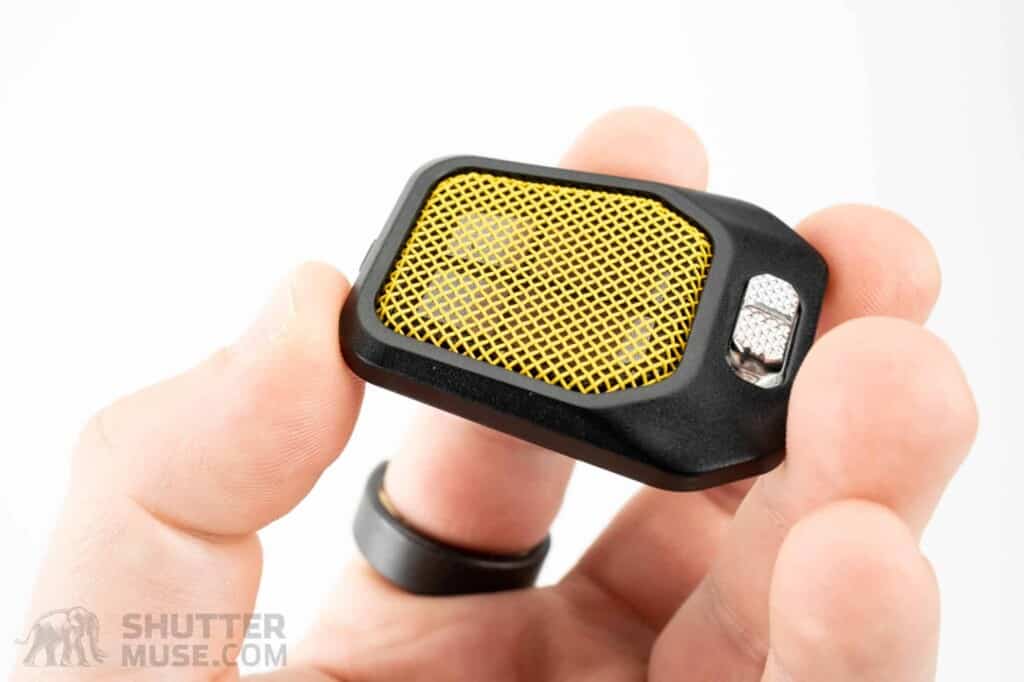


The BB2’s filter is removable and replaceable if it becomes too gummed up with crud. I do not think you would have to do this very often, and you can lengthen the time before a change by removing the filter and blowing canned air through it from the back side.
Nitecore BB1 Vs BB2
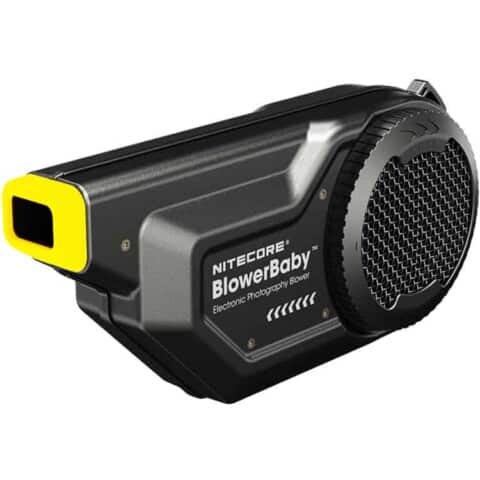

The original BlowerBaby was generally well-received as a concept, but many people complained that it wasn’t as powerful as a simple Rocket Blower. The BB2 tries to address this complaint with a 33.6W motor that is 51% more powerful than the original BlowerBaby. The new model also has a 3-speed motor control dial, a built-in LED, a retractable camera body brush, a protective cap to prevent debris from entering the blower during transport, and a lock switch to prevent accidental operation.
Finally, the non-removable battery has increased its capacity by 30%, giving the blower a claimed 800 cleanings on a single charge. All in all, I think Nitecore has done a great job of addressing people’s concerns with the first product while also taking things a step further with the addition of the LED and the retractable brushes.
BB2 Battery Life
Nitecore makes some lofty-sounding claims about the battery life of the BB2, stating that 800 cleanings are possible between charges. I think it’s safe to assume that this estimation uses the low-speed “silent” setting, which is not very useful for most applications. More apparent is that they claim 210 cleanings in Optical mode, with a 10-second blast counting as one cleaning. That would equate to a 35-minute run time. In my own testing, I could run the BB2 in Turbo mode continuously for 14 minutes.
Whichever way you cut it, these are better results than I expected. Even if I only ever use Turbo mode, I would expect the BB2 battery to last me 10+ good cleaning sessions using over a minute of air each time. When I think about how I usually use a Rocket Blower, it’s usually a few sub-second-long squirts at my sensor. Used like this, the BB2 should easily go several months between charges.
As for recharging, the BB2 comes with a small USB-C cable and can use any USB-C output for charging. A full charge is claimed to take an hour, and I found that to be accurate in my testing. One thing to note is that the product manual states the BB2 can be used while charging. While that is true, it is not directly using the USB-C power to run the motor; it is still pulling power from the battery. Thus, if the battery in the BB2 is flat, you will still need to give it a few minutes of charge to get some juice into the battery. This also means there is no way to run the BB2 for an infinite time while attached to a USB-C output. Not that I can think of a reason to do that… it’s just an observation.
Operation
There are two ways to operate the BB2 blower. If you press and hold the power button, the fan will run until you release the button. If you want to run the fan without needing to hold the button, a quick double press will turn it on permanently. To turn it off, you can press the button once more, or simply rotate the wind speed dial to the lock mode.
Wind Speeds
The BB2 has three wind speeds selectable from a rotating dial:
- Silent: 18.5mph (30 km/h)
- Optical: 34mph (55 km/h)
- Turbo: 49.7mph (80 km/h)
I honestly have no idea why that didn’t just name the three wind speeds low, medium, and high. By Nitecore’s admission, the so-called silent mode produces 55 decibels of noise, which is far from silent. The video on their website also advocates for using Optical mode when cleaning camera sensors without giving any reason for this. In my testing, I found that Turbo mode was much more comparable to the forces I felt coming from my Rocket Blower, so that is what I used on my sensor.
For reference, the wind speed from the original BlowerBaby BB1 was 43.5 mph, which is not a great deal less than the Turbo mode on the BB2. However, my understanding is that the nozzle design has been adjusted to focus that air on a smaller area, thus delivering the claimed increase in power for the BB2.
Compared to a Rocket Blower
The Nitecore website claims that a “conventional blower” delivers 35 km/h (21.7mph) wind speeds. Having played with three sizes of Rocket Blower and three sizes of the Sensei blower side-by-side with the BB2, I’m perplexed by how they arrived at those measurements.
To perform my own testing and validate what I could feel on the palm of my hand, I poured damp sand into a bowl and packed it down tightly. I then aimed a Large Giottos Rocket Blower at the sand from a distance of about 2 inches and gave the bulb one good squeeze. Naturally, this left a hole in the sand that gave me a visual representation of the air jet’s power. I then placed the BB2 the same distance away from the sand and turned it on to Turbo mode for about one second. The indent left in the sand by the BB2’s air blast was not even close to the depth created by the Rocket Blower. It wasn’t even in the same league! This simple test proved what I had already suspected by aiming both devices at my hand. A Large Giottos Rocket Blower produces a far more powerful air jet than the Nitecore BlowerBaby 2.
I honestly do not know where Nitecore is getting their numbers from. And yes, I repeated this test with a Small Rocket Blower and a Medium Rocket Blower, both of which produce slightly less powerful air jets than the Large size blower. Again, both of them outperformed the BB2 in terms of pure air pressure at a point. And this was comparing them to Turbo mode! Silent mode and Optical mode would reveal an even larger power gap.
Before publishing this review, I reached out to my contact that had provided the BB2, and in turn, they contacted Nitecore to get clarification on the wind speed and pressure claims. The response was: “Mentioned that the wind pressure of manual air blower at a certain point is stronger than our BB2: Manual air blower focuses on a single point for cleaning. Some brands do have stronger wind pressure when squeezed quickly, but it will be very laborious and tiring to clean some large areas.”
The response from Nitecore confirms that wind speed and wind pressure from a regular blower are higher and therefore offer a greater possibility of removing stubborn dirt. What is most surprising to me is that Nitecore’s marketing tries to tell people otherwise. Nitecore’s marketing claims an 80% improvement in pressure over a “conventional blower” and a 230% improvement in wind speed. Yet they freely admit, when asked, that a standard blower can be stronger. I’m very disappointed by this as it seems like an intentional attempt to deceive potential customers.
Where the BB2 delivers better performance is the accuracy and width of the air jet. Rocket Blowers can create a strong jet of air, but that jet hits a tiny area of your camera, lens, or sensor. Moreover, due to the rubbery nature of the blower, it’s tricky to repeat that air jet perfectly and hit a precise target—especially when aiming at specs of dust on a sensor. The BB2 has no such problems. The air jet is broader, thus hitting a more significant portion of the camera, lens, or sensor. You can also walk the BB2’s air jet back and forth across the area you are trying to clean, making it much easier to deal with a specific piece of dust or dirt.
BlowerBaby 2 vs Rocket Blower – Which to Choose?
Giottos Rocket Blowers and other similar devices, such as the Sensei Blub Air-Blowers, have been the standard fist-step in a good camera cleaning protocol since the first days of digital photography. Aside from a few awkward moments where I might have forgotten to pack it, I’ve had a Rocket Blower in my camera bag every time I have gone on a photo shoot for nearly two decades. Of course, I first wanted to know whether the BlowerBaby 2 could replace my Rocket Blower.
There are several considerations when weighing the choice between a Rocket Blower and a BlowerBaby 2. The first is durability, and to underline this, I will return to a comment I made in the previous paragraph. One of the Giottos Rocket Blowers I have in my kit is the first Rocket Blower I bought back in 2003 when I got my first DSLR. As I write this review, it is 19 years old. Nothing else in my camera kit has lasted as long as my Rocket Blower!
Will my BlowerBaby 2 still be with me in 19 years? Although the BB2 is built from aluminum and feels sturdy, I’m confident it won’t be in my gear closet in the 2040s. As soon as you combine this many moving parts, bearings, and degradable batteries, you can’t produce a product that will–as I suspect a Rocket Blower will–last a lifetime. This is just a fact, so then, the question becomes, can you improve upon the Rocket Blower in enough ways that it makes the purchase worthwhile, even though you know that it has a shorter lifespan?
I want to be clear here that I’m not making a dig at the BlowerBaby 2’s quality of construction in any way. I have seen nothing in my testing to indicate that Nitecore has cut any corners regarding build quality. The BB2 feels in every way a refined Gen2 product.
So, let’s get back to whether the BlowerBaby 2 can improve upon the Rocket Blower in enough ways to be worth considering as an alternative or a replacement. The form factor of the BlowerBaby 2 is a considerable improvement over a Rocket Blower. The sleek, smooth shape of the BB2 makes it easy to slip into most camera bag accessory pockets. On the other hand, I have always struggled with where to store the Rocket Blower. Although they are compressible, they are still my least favorite item to pack in my camera bag.
What about air travel with these things? There have long been stories floating around the internet of people having issues with Rocket Blowers and air travel due to their suspicious shape. While I don’t doubt the veracity of such stories, I must have taken my Rocket Blowers over 250 flights by now, and not once have I had any issues. These days, my camera bag gets opened up at nearly every security checkpoint for swabbing, and no TSA agent has ever made mention of the rocket-shaped item that is obviously visible on top of my gear.
I don’t think the air travel argument should be considered in this comparison. But if it worries you, there is a slight possibility that you’ll have an easier time with a BlowerBaby 2 in your bag than a Rocket Blower. That said, the non-removable li-ion battery in the BlowerBaby 2 means that you are forced to carry it in your carry-on bag rather than packing it in your checked luggage. The BB2’s 11.2-ounce weight (330g) is not insignificant when trying to keep to some airlines’ increasingly restrictive weight limits.
Regarding general usability and ease of cleaning, I have to say that the LED on the front of the BlowerBaby 2 is also beneficial. When I use a Rocket Blower, I often grab a headlamp or flashlight to pinpoint the stray hair or dust particle on the sensor. That means placing the camera sensor-up on a table with a light in one hand and a blower in the other. Having the LED built into the blower means holding the camera body with one hand and blowing with the other.
Only needing one hand for the blower means you can hold the camera body upside down while you do this to prevent more particles from falling into the sensor chamber while you clean. Additionally, an upside-down camera means that any particles you dislodge with the blower should drop out of the chamber and not simply get pushed aside, where they could fall back onto the sensor later. While the increased power of the BB2 is excellent, a close second in the list of improvements over the BB1 is the inclusion of this LED.
Now we get to the crucial conversation about actual cleaning performance. For general external camera and lens cleaning duties, the built-in brush and the BB2’s Turbo mode outperformed a Rocket Blower. However, it was a much closer fight if you even the playing field by using a brush with the Rocket Blower. Though it is much easier to turn on the BB2 and move it around than constantly pumping the Rocket Blower, the result is very similar.
The big surprise was sensor cleaning. Based on Nitecore’s claims that a conventional air blower creates a 35 KM/h air jet, I was expecting the BB2, with its claimed 80 KM/h wind jet, to outperform a Rocker Blower by some margin. This turned out not to be the case. In my side-by-side testing, the air blast from a medium or large Giottos Rocket Blower was vastly more powerful than the BB2 in Turbo mode. This disappointing result means that the good old Rocket Blower is a clear winner for stubborn dirt on a camera sensor.
Both products have pros and cons in the fight between the BB2 and a standard Rocket Blower. The Rocket Blower is more powerful, cheaper, more durable, doesn’t need charging, and will last a lifetime. The BB2 provides more accuracy, an LED for pin-pointing dust particles, and a built-in brush that can help to simultaneously dislodge and eradicate dirt from your camera’s exterior crevices.
Conclusion
The Nitecore BlowerBaby 2 is a good general-purpose camera cleaning device. It is effective at dislodging dust and dirt from the exterior of your camera, but despite Nitecore’s claims, it is not as powerful as a basic Giottos Large Rocket Blower. The much cheaper Giottos Rocket Blower is still better if you have stubborn dust or dirt on your camera sensor.
Honestly, I was disappointed to draw this conclusion for two reasons. Firstly, I have seen many YouTube videos profess the BlowerBaby as this incredible “must-have” cleaning tool, eulogizing it as though it were some game-changing technology. It’s not. If you already own a Rocket Blower and want to spend $90 on something that will make external camera cleaning marginally easier, you can buy one. It is far from a must-have item, though, and adding a horse-hair brush alongside a Rocker Blower will do much the same thing.
The second disappointment is with Nitecore’s marketing, suggesting that a conventional air blower produces less than half the wind speed or cleaning pressure of the BB2. I tested many different air blowers, including all three sizes of the de-facto standard, the Giottos Rocket Blower, and came to a very different conclusion. I believe Medium and Large Rocket Blowers offer more cleaning pressure, albeit in a shorter blast and concentrated on a much smaller area.
Even the smallest Rocket Blower appeared to be comparable in pressure to the BB2—a far cry from Nitecores’s claims. After receiving a response from Nitecore, they freely admitted that a rocket-style blower can be stronger, even though their website tries to make people think otherwise. I’m unimpressed by this marketing tactic, and honestly, probably won’t bother looking at Nitecore products again in the future.
All of this makes the BB2 a nice tool in your at-home camera cleaning toolkit for easy after-shoot cleaning and maintenance, but it will not replace my trusty Rocket Blower for in-the-field emergency sensor dust removal.
Where to Buy
As always, using my links for your purchases is appreciated.












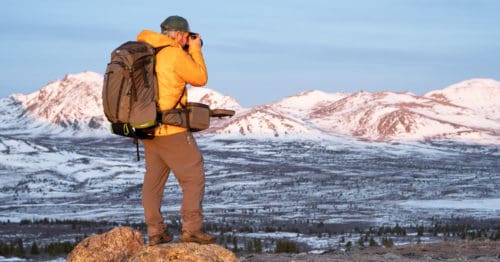
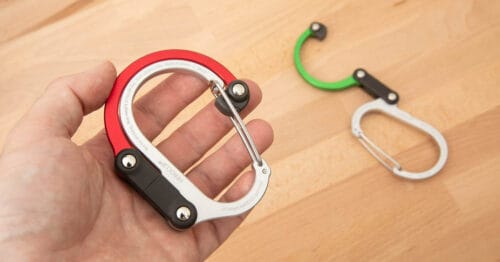
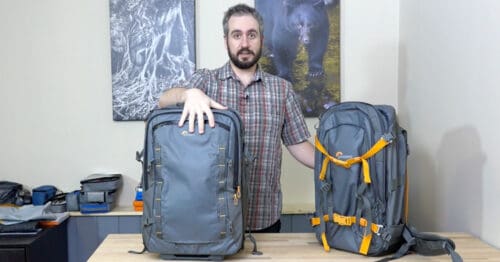

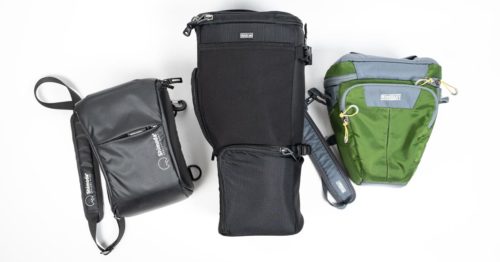
Very interesting, I suspected as much (inadequate blowing power). Even a rocket blower is inadequate compared to canned air.
I bought a no-name AC mains-powered blower from Amazon, shaped like a tea kettle, and it’s proven sufficiently powerful that I’ve ditched the environmentally unfriendly canned air. Obviously it’s not mobile like this, but it actually works as advertised even with the wide nozzle.
I bought a Svinkal air duster from Amazon. It does the job very well with a powerful stream of air.
Lots of hyperbole from all the YouTubers pushing a referral link, that said, I find that it’s worth if you buy it on AliExpress, where it’s substantially cheaper (~$55). While it doesn’t blow as hard as the Rocket when it comes to the maximum force applied to a small area, I don’t think it’s a big deal since the brush will dislodge everything first, and the wind from the BB2 is sufficient to blow whatever remains away.